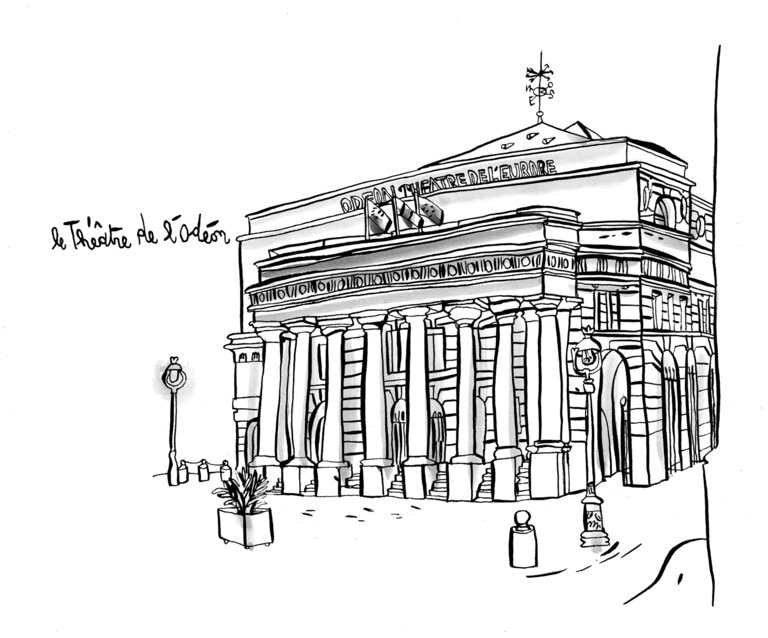


Built around the theatre of the same name that bears the ancient (Roman) denomination for a place used for plays and musical entertainment, ‘Odeon’, the district is naturally the epicentre of the Latin quarter.
A lively intersection on the Left Bank, the bustling Odéon neighbourhood is perfectly illustrated by the statue of Danton, used by generations as a meeting place before heading off into the district’s buzzing streets.
The Sorbonne, Paris’ former School of Surgery and the Institute of Political Studies, the famous Sciences Po, mark the borders of the district, a place synonymous with studies and youth, while Les Éditeurs, a neighbourhood institution, is a reminder of its literary roots.
Here, theatre, illustrious studies and literary endeavours set the pace of life. People flock to the district both day and night.
One of the rare parts of Paris to have escaped the Haussmann renovations, its architecture is remarkably varied: from the medieval buildings on Rue Monsieur le Prince, the former land of the Princes of Condé, to the 17th-century private mansions on Rue de Seine and the majestic Haussmann constructions on Carrefour de l’Odéon, a multitude of architectures cohabit.
Central, historic, bustling and with plenty of architectural and real estate choice, the district is naturally very popular, with one constant: the properties are all upscale. A particularly coveted location, demand outstrips supply here and the market reflects this aspect with stable prices that continue to rise steadily. Investments here are a sound, long-term opportunity.
Neighbourhood life
There are a thousand and one options for outings in the district, a true melting pot. Fancy a visit to the arthouse cinemas like the Nouvel Odéon, or the theatres such as the Odéon-Théâtre and La Huchette? Or perhaps a literary immersion at Les Éditeurs or the Collège de France.
Or why not enjoy an endless taste experience, from Japanese cuisine par excellence on Rue Monsieur le Prince with its authentic izakayas to the best of Italian food with Marcello and Localino, tea rooms (a precious tradition in the area inherited from the literary salons) and a whole host of other variety in the form of the British Smith Bakery, the Japanese Tomo and La Jacobine with its incomparable hot chocolate.
Pleasure can also be combined with history at Le Procope or the Bouillon Racine which serves up excellent traditional cuisine where once philosophers constructed the central texts of the Enlightenment.
Or for a more modern take, why not sample the delights of Ze Kitchen Galerie[A1] , a French nouvelle cuisine institution, or soak in the décor of La Pérouse, still modelled on a tantalising 17th-century boudoir. A multiplicity of choice equal to the district’s vivacity.
Not to be missed
The district in itself is a must-see. Nearly each and every one of its buildings holds a piece of Paris’ history and soul, but the Cour de Rohan in particular, a succession of three paved and tree-lined little courtyards connecting Rue du Jardinet to the Cour du Commerce Saint-André, takes visitors on an unexpected journey through time. This intermix of paving stones and greenery instantly transports you back to the Middle Ages, the period from which it originally dates.
